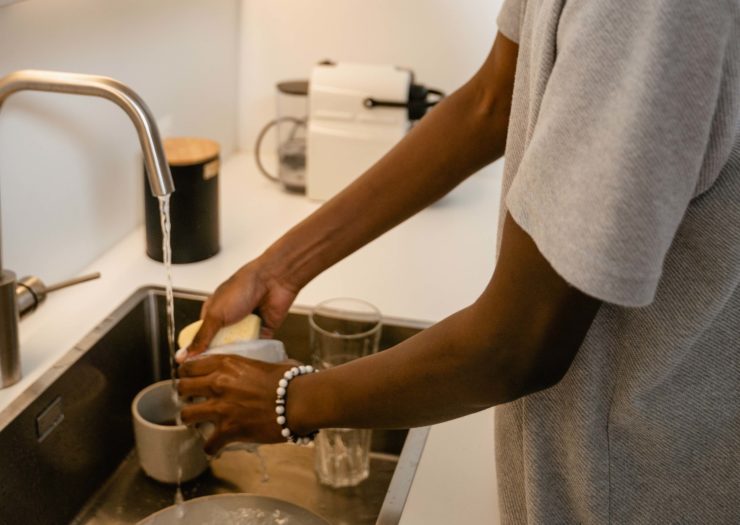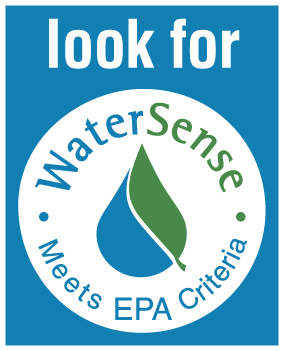
Faucets are the 3rd highest use of water in homes, right after showers. Upgrading to a more efficient faucet or adding a new aerator can save a lot of water over time. And since we often use hot water at the sink, saving water also saves energy.
Choosing an efficient faucet
We are lucky that in Washington state, finding an efficient faucet is relatively easy. As of 2020, all kitchen faucets sold in stores have to have a standard flow rate of 1.8 gallons per minute (gpm) or less, and bathroom faucets must use 1.2 gpm or less. Check for the flow rate in the product details or specifications if you buy one online.
Replace any faucets or aerators that use more than 2.2 gpm. Most faucets are labeled with a gpm rating in small print near the end piece.
When picking a new bathroom faucet, look for:
- A flow rate of 1.2 gpm or less.
- WaterSense labeled faucets to know that the product is independently tested to save water and work well.

When picking a new kitchen faucet, look for:
- A flow rate of 1.8 gallons per minute (gpm) or less (a temporary flow of 2.2 gpm is allowed for pot filling.)
- An adjustable flow rate that allows you to use a higher flow rate to fill pots more quickly when you need to, and a lower flow rate when washing hands or doing dishes.
- An adjustable spray pattern, which can help you get the most out of a lower volume of water.
Install efficient aerators
You don’t usually have to replace a whole faucet to make it more efficient. Most faucets have an end piece with a mesh screen called an aerator. The aerator can be a separate piece you screw on to the end of the faucet, or built inside the end of the faucet. Aerators add air to the stream of water to help reduce splashing and control the flow of water.
Install new aerators if your faucets don’t have them, or if your aerator is showing signs of wear. The stream of water from a faucet without an aerator is clear. You can’t see through a stream of water that is aerated because of the air bubbles.
Efficient bathroom aerators use 1.2 gpm or less and efficient kitchen aerators should use 1.8 gpm or less.
Learn how to install a faucet aerator.
Everyday actions that save water
In the kitchen:
- Instead of washing produce with a running tap, use a large bowl of water.
- Use your dishwasher instead of washing dishes in the sink, which can save up to 12 gallons per load.
- If you do wash dishes in the sink, fill the sink with soapy water to wash the dishes, then drain and rinse.
- Plan ahead and thaw frozen foods overnight in the fridge or on the counter rather than under running water.
- Fix drips right away.
In the bathroom:
- Turn off the water while brushing your teeth.
- Don’t walk away while waiting for the water to warm up.
- It’s worth repeating: Fix drips right away.
Learn how much your faucet uses
Often, aerators will be labeled on the side with the gpm flow rating in small print. Customers of Saving Water Partnership member utilities can also request a free flow rate bag to measure the flow rate. Email melissa.levo@seattle.gov to request one.